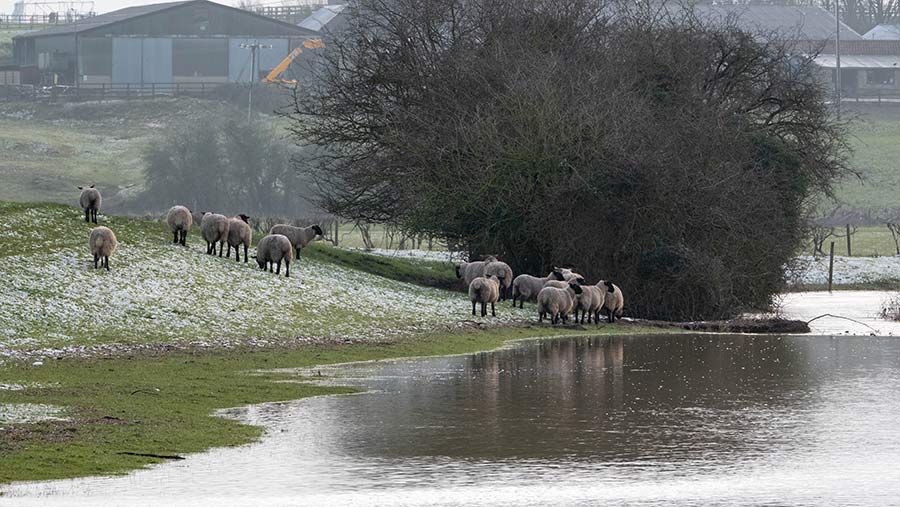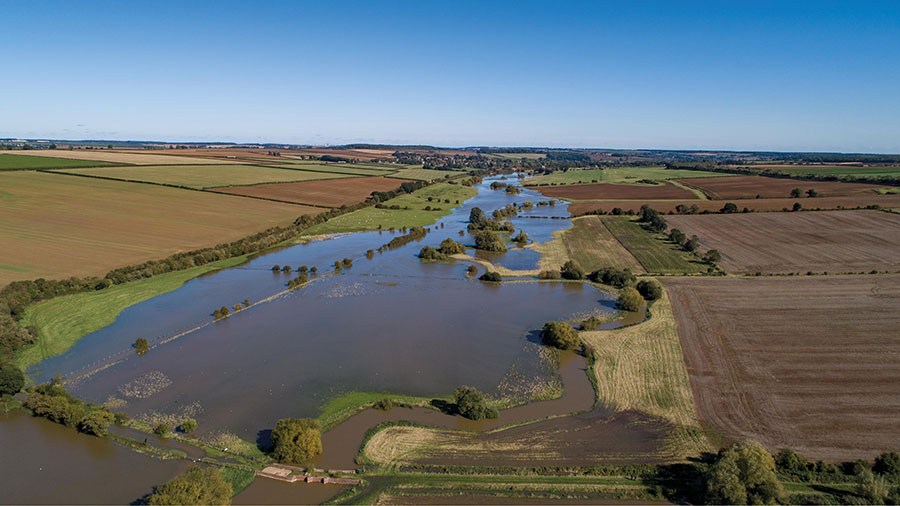Q&A: What are your rights when farmland is flooded?
 © Tim Scrivener
© Tim Scrivener Flooding can have a devastating effect on a farm business and, with extreme weather becoming more common because of climate change, it is a problem that more and more people are having to face.
The number of inquiries to law firms from farmers about flooding issues is increasing.
These can be cases involving two landowners, where the failure of one landowner to maintain a watercourse leads to flooding problems for another.
Or issues can relate to large-scale weather events where the landowner feels the actions or inactions of a relevant authority have led to flood problems which they feel they should be compensated for.
Jonathan Stork, a partner in the dispute resolution and litigation department of law firm Shakespeare Martineau explains your rights.
See also: Can beavers and farms work together on flood control?
Which authorities are responsible for preventing flooding?
Flood risk is largely shared across the following authorities:
-
County councils and unitary authorities take the lead in managing local flood risks. This means they have responsibility for setting flood strategy, carrying out works and maintaining the register of flood assets that have a significant effect on flooding in their area.
- The Environment Agency (EA) has a strategic overview of all sources of flooding and is responsible for flood management activities on main rivers and the coast.
When might a landowner have a claim against the EA or a local authority?
Typically, flooding on farmland as a result of the EA or a local authority not taking action – for example, not raising banks or not dredging a watercourse – is unlikely to lead to recourse in law.
Cases trying to get compensation for losses relating to a perceived failure of a statutory authority to use their powers have failed.
This is because their powers are permissive – which means they’re not obliged to use them.
“The EA has to weigh up different interests and the priority, set by the government, is towards the preservation of residential property and built-up areas,” says Mr Stork.
It may be different if the EA or the local authority owns the watercourse, because that brings obligations to keep it maintained. However, that’s extremely rare.
Could there be a case if one of these bodies has actively done something that has resulted in flooding?
If the relevant authority has done something that increases the risk of flooding on a farmer’s land, then arguably they may have a case for compensation for nuisance, says Mr Stork.
It could be if they’ve done work on the bank and done it badly or negligently, which has made it weaker, or if they’ve raised one side of the bank so that it makes it much more likely that one side will flood than the other.
“The key word is ‘cause’,” he says. “You need to assess whether there is a failure – not a failure of inaction, but a failure of action – on the part of the statutory authority.
“Essentially, what have they done in the past and how has that contributed to the situation? The fact that you have 100 acres of wheat under water does not automatically give rise to a claim for compensation.”
So, is the key in proving that an action has made the situation worse?
Yes, and that isn’t always easy. These can be complex cases relying on expert evidence. They can also be expensive – not least because authorities tend to fight them for fear of setting a precedent.
There was a case a few years ago where the statutory authority had been using its powers to relieve flooding and had pumped water off land, as it was entitled to.
But it had sent it onto a neighbouring farm, destroying a carrot crop and causing tens of thousands of pounds of damage.
That claim was successful because it was for compensation for the use of the local authority’s powers.
Does a big flood automatically mean a big compensation claim?
No. The level of loss is important, but if the damage is relatively limited, even where it’s a large flood, you get into issues of proportionality and the reasonableness of the action being brought.
What evidence can a farmer gather to support a case?
Understandably, most people don’t consider evidencing a problem that hasn’t yet happened.
But in an ideal world a farmer seeking to make a claim would have inspected and taken photos of all their watercourses over a period of time, making a log of their condition.
“Having a good photo inventory of affected areas is important,” advises Mr Stork.
“Farmers often have aerial photos that were taken decades ago and they’re fantastic, because they show changes over time. Resources such as Google Maps can be really helpful, too.”
If you have concerns about the actions of a statutory authority, make sure you put them in writing. Making inquiries and complaints by telephone doesn’t build the sort of story lawyers like.
“You need it in black and white. Documentary evidence that you repeatedly alerted them to a potential problem can be gold dust.”

© Tim Scrivener
Do landowners need permission from the EA to clear watercourses?
Clearing ditches and dykes is usually fine, but if you’re thinking about doing work on a major watercourse, you should be talking to the EA or local authority about your plans.
If you have concerns or you want to undertake works, having that open dialogue is crucial.
If a problem can be avoided by having those conversations, it’s far better. Flooding is a common enemy.
If you take preventative action that results in flooding to others, could you be subject to a civil case from your neighbour?
Potentially, yes. People do have a right to protect their land, but that is a qualified right, so if the exercise of that right unreasonably causes additional risk to other landowners, there is potential recourse.
It’s better to work collaboratively with your neighbours rather than trying to “parcel up” solutions, because that’s not how topography and geography work.
“From a legal perspective, cases between private individuals are a bit simpler because they usually involve an allegation of an action – or inaction – on one person’s land and the effects upon the other, as opposed to the more difficult issue of duties that may well not exist relating to a claim against the local authority or the EA.”
If a failure to maintain your own watercourses, or blocking them, leads to flooding on adjacent land, this could also result in personal liability for the landowner or land user.
This might result in a court requirement to take action and a costs order as well, which could be substantial.
If you’re flooded and you end up with lots of debris on your land, who is responsible for dealing with that?
The landowner. From a practical point of view, they’ll want to get that ground back into productive use as soon as possible.
But it’s important from a legal point of view, too, as a potential claimant has a legal duty to take reasonable steps to mitigate the loss.
So, if a deluge leaves land swamped, unusable and covered with debris, if there are things the landowner can reasonably do to bring that back into use, they should do them rather than say: “I’m going to leave it in that condition and sue my neighbour for X-many years’ worth of losses.”
That would be, arguably, a failure to mitigate loss. It’s always worth checking your insurance policy to see if that covers this sort of work.
Do you expect there to be more disputes in future?
We’re facing a more challenging environment – whether it’s hotter, drier, wetter or colder – and the evidence is that events are going to be much more intense.
“The reality is we can’t turn the tap off and stop the water coming from the sky, so if landowners and authorities can collaborate rather than end up at loggerheads, that’s a better, more pragmatic, more positive outcome,” says Mr Stork.
